Home & Garden
SCHOOL’S OUT!
Read about local kids going to the beach, making music videos, going to camp and more on pages 7 to 9.
Next month, our School News reporters will be back on the beat for our annual Back To School issue.



Read about local kids going to the beach, making music videos, going to camp and more on pages 7 to 9.
Next month, our School News reporters will be back on the beat for our annual Back To School issue.


By H. Hutcheson
LACMA’s new David Geffen Gallery, designed by Swiss architect Peter Zumthor, was on display for members and press only in July. The floating horizontal glass and concrete building, which spans Wilshire Boulevard, offers panoramic views of Hancock Park and Miracle Mile in all directions. Entire stretches of the building are made of glass walls, tipping the eye of the patron toward the Tar Pits and across to the Hollywood Hills. Art will be hung within the interior rooms (also made out of concrete), but made with hard, sharp, flat concrete edges—a strong contrast to the organic exterior structure.
Scheduled to open to the public in April 2026, docent James Canto said, “With LACMA being an encyclopedic museum, this particular building will have our permanent collection. Much of that has been off view for three to five years.”
At the member preview, Los Angeles local architect Jim Eserts and fellow architect Chris White shared with us their feelings of the extraordinary addition. Eserts said, “Experiencing the roof and that wall of glass around the perimeter is amazing because
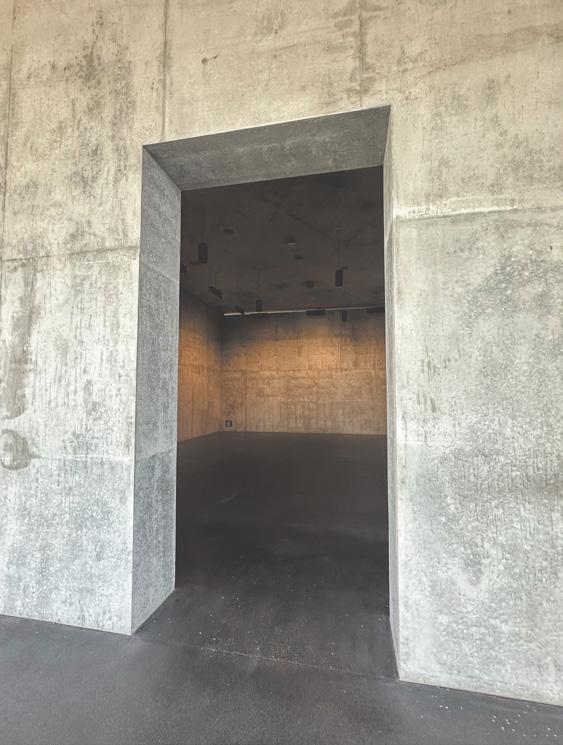
you undulate all the way around. I don’t know why the interior spaces didn’t relate as well (moving organically), because concrete is a completely malleable material.” Concrete can be formed to any shape. White added, “But walls for art? (Needing to be flat?).”
Eserts said, “Yes, look at the Guggenheim in New York, where the art is hung on walls that have movement.” Both laughed and added, “Well, that’s not the best example!”
Not a favorite of the two architects.
Another docent shared that the ground floor will house a gift shop, a restaurant and education spaces.
WINDSOR SQUARE NATIVE & MARLBOROUGH ALUMNA
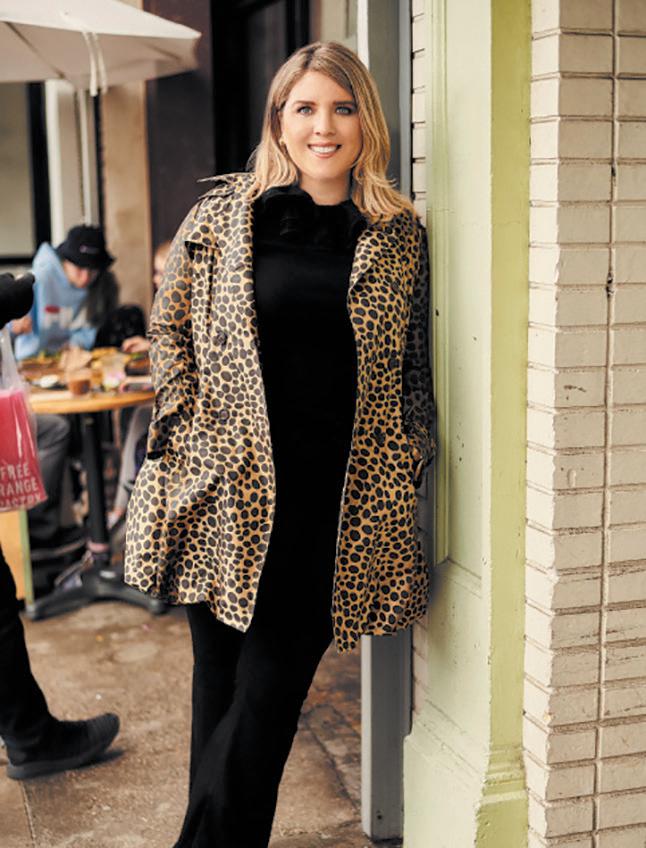

The unfinished connecting space south of Wilshire Boulevard will house the Steven Tisch Theatre, which will continue LACMA’s film screenings, lectures and concerts.




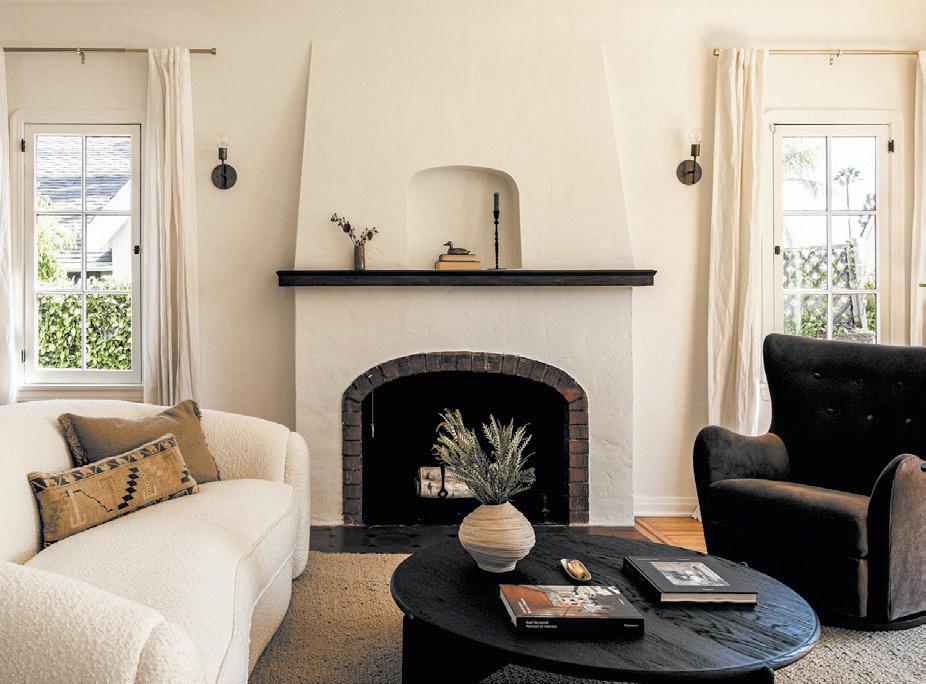
By Jon F. Vein and Freya Estreller
Across Los Angeles, homelessness remains one of the most visible and urgent challenges of our time. Despite massive public investment, the crisis persists. But now,
something promising is taking root—Los Angeles is embracing a proven model that’s working across California.
DignityMoves, the nonprofit behind a wave of innovative interim housing communities, is expanding its footprint in L.A. With projects underway in Hollywood and one completed in nearby Thousand Oaks, the city is finally getting on board with a solution designed for speed, dignity, and scale.


A smarter bridge to permanent housing DignityMoves doesn’t build shelters—it builds stability. Its interim supportive housing (ISH) model offers private rooms with doors that lock, 24/7 staffing, and onsite services like case management, job counseling and mental health care. It’s a far cry from congregate shelters that many people understandably avoid.
Each community is developed on underutilized land using modular construction from vendors like LifeArk and Boss Cubez. Some are pop-up villages; others are semi-permanent. All are designed to meet people where they are— and help them move forward.
ISH is not a replacement for permanent housing, but a necessary and missing link
in the housing continuum. “Think of it as an on-ramp,” says Elizabeth Funk, Founder and CEO of DignityMoves. “It gives people a safe place to land while they work on a path to stability.”
It’s working—and fast
In Santa Barbara, the county partnered with DignityMoves in a bold “DignityNOW” strategy to end unsheltered homelessness countywide. Three sites are already open, more are in the pipeline, and visible encampments have been replaced with clean, vibrant communities. At one downtown site, over 70% of residents moved on to permanent housing within a year.
In San Jose, Mayor Matt Mahan’s embrace of interim housing—paired with Digni-

(Continued from Page 3)
tyMoves’ communities like Via del Oro—has led to real results. While California saw a 10.3% increase in unsheltered homelessness last year, San Jose saw a 10.7% decrease.
The model is replicable, cost effective and fast. A DignityMoves room can be built in as little as six months for around $75,000—compared to up to $837,000 per unit for traditional permanent housing in Los Angeles.
Prevention is the key
Here’s a sobering truth: 80% of people who fall into homelessness initially do not have serious mental illness or addiction issues. But after six months on the street, that flips. Prolonged homelessness creates trauma and makes recovery far harder.
Interim housing gives people a chance to catch their breath before the damage deepens. With stability, people reconnect to services, family and purpose. And the impact isn’t just personal—it’s financial.
In Santa Clara County, a study found that leaving
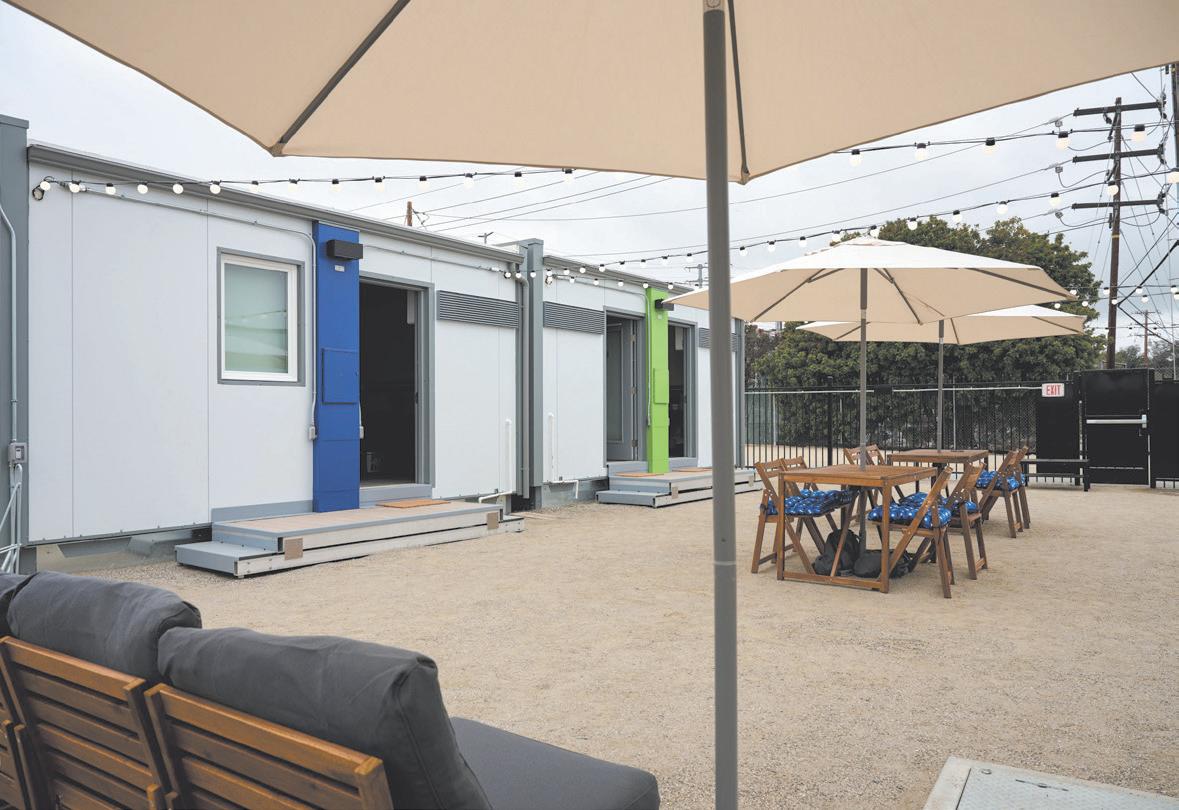
someone homeless on the street costs over $80,000 per year in emergency services. By contrast, a year in a DignityMoves community costs less than half that—and delivers far better outcomes.
Building momentum in L.A.
Los Angeles has taken some important steps with its tiny home villages and encampment resolutions. Now, with DignityMoves, the city is adding a new, scalable tool to its homelessness response.
The organization’s unique “capital accelerator” model uses private philanthropy to unlock public dollars, speeding up development. In 2024




alone, DignityMoves raised over $20 million in private funds, catalyzing $99 million in public investment.
More than a housing developer, DignityMoves is a systems-change leader—helping cities navigate emergency powers, streamline approvals and build public trust. Their approach has earned bipartisan support in Sacramento, where recent legislation has formally recognized interim housing as a key component of homelessness solutions.
A future we can Build now DignityMoves isn’t claiming to solve homelessness overnight. But they are showing what’s possible when cities act urgently and compassionately. Private rooms, supportive services and fast deployment are a winning combination— one that brings people inside quickly and helps them move forward.
For too long, our streets have served as the waiting room for permanent housing.
With DignityMoves, Los Angeles is proving that we can do better. The question is no
longer whether we can solve this crisis—it’s whether we’re ready to build what works.

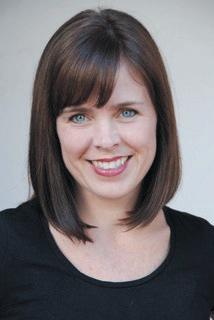



Earlier this year I wrote about Senate Bill 79 (SB79) and the threats it posed to the historic neighborhoods of Greater Wilshire. This bill, which is designed to promote Transit Oriented Development (TOD) would upend zoning codes throughout the city and county to allow for the construction of 5-6 story buildings on any lot zoned residential within ½ mile of a transit stop. This would cover almost all of our Historic Preservation Overlay Zones and historic districts allowing for the demolition of contributing structures in these areas, the demolition of historic cultural monuments and landmarks designated on the state and federal levels, no exceptions. There is no greater threat to our community’s and our city’s historic resources than this bill.
Approximately 6% of Los Angeles is protected as historic. A fraction more contains “identified historic resources” meaning those sites listed on Office of Historic Resources main database of identified historic buildings and districts, SurveyLA, that are not protected but are eligible for either city, state or federal designation. SB 79 places
a bullseye squarely on the oldest and most historic communities of our city, Greater Wilshire, Hollywood, Beverly Grove, Downtown, Westlake, Los Feliz, Silver Lake, West Adams, essentially all of central Los Angeles, that are rich in both designated and identified historic resources as well as transit.
Historic buildings and historic districts are not renewable resources. Once they are gone, they are gone. The protection and celebration of our built heritage has always been a fight in our city that likes to see itself as perennially young and dynamic. The historic preservation movement in Los Angeles through
by Brian Curran
decades of battles, victories and losses, established itself as part of the fabric of our polity and in the values of many of our communities. It is a recognized good. It must be protected at all costs.
Already the defenses are weakening. Laws such as SB330 passed in 2019, ended our city’s ability to create Historic Preservation Overlay Zones and Assembly Bills 130 and 131 recently signed into law by Gov. Newsom exempted new residential infill projects from the California Environmental Quality Act
(CEQA). CEQA had been a powerful tool for the preservation community allowing for the review of projects that affected identified historic resources, occasionally leading to the saving of a historic structure or its integration into a new project. But even AB130 and AB131 do not impact designated resources. Act now to stop SB79! By now most of the readers of this newspaper will have received notices from your homeowner’s and neighborhood associations asking for your help to defeat this bill, which not only promises to decimate the historic treasures of Los Angeles, but end single-family neighborhoods
as well, which also are not exempt. If you have sent an email or made a call previously, send another, NOW! Our Assemblyman Rick Chavez Zbur needs to hear from you before he returns to Sacramento on Tues., Aug. 19. Look for events that the Assemblyman will be attending and speak with him directly if you can, but also call and write to him urging him to amend this bill to exempt designated historic resources from this bill. His office line in Sacramento is 1-916-319-2051 or you can call the local district office 1-323-436-5184 or email him at assemblymember.Zbur@ assembly.ca.gov. It’s in our hands.
By Nona Sue Friedman
One of the largest retail spaces on Larchmont Boulevard now lies vacant. Rite Aid, a national pharmacy chain, closed July 27 after the company declared bankruptcy. Along with its closure, Above the Fold newsstand shuttered, since their space was contingent on Rite Aid’s lease. The property’s owner, Ron Simms, of Simms Commercial Development, already
hired real estate company Newmark Pacific to lease the expansive property. Newmark designed a splashy digital brochure with potential plans to divide the 12,000-square-foot space. In the proposed designs, the retail space extends to the sidewalk, mimicking the rest of the Boulevard. There is no mention as to whether Simms would provide the construction or if the
(Please turn to







Catch. There are few pastimes as American as a dad and his son or daughter throwing a baseball back and forth to each other.
Unless that offspring is a varsity high school pitcher.
The ability to hurl a pitch 90 mph is rare, but it’s a necessary benchmark for boys looking to play college baseball. Velocity is not the only factor scouts and coaches care about, but it certainly gets their immediate attention. Presently, only about 1% of the nation’s varsity high school pitchers can throw a ball 90 mph or faster.
Celts
“I don’t play catch with my son anymore,” admitted Jon Sidel. “It’s too scary.”
Jonah Sidel, who will be a senior at Crespi Carmelite High School in Encino this fall, has reached 92 mph with his fastball, though he throws 90 mph consistently (the fastest a Major League pitcher has reached is 105 mph). This past season Sidel’s role for the Crespi Celts was mostly as a middle-inning reliever. “My favorite pitch is the fastball, when it’s on,” he said.
Sidel also has a great slider, and he’s improving his changeup.

Youth Sports by Jim Kalin
Crespi was one of California’s top baseball teams this year. They finished the season 24-3 and ended up ranked No. 21 in the nation. They compete in the Mission League, which is regarded by many as the best conference in the state for baseball.
The Celts progressed to the CIF (California Interscholastic Federation) Division I state tournament semifinals in May, then were upset by Santa Margarita High. “I’d like to be a starting pitcher next year,” said Sidel. “That way I’d get more time to use all of my pitches.”
There’s a good chance of that happening. Crespi lost two stellar senior pitchers: Jackson Eisenhauer and Diego Velazquez. Eisenhauer, who attended Larchmont Charter School (Selma) and played in the local Wilshire Warriors League, was the 2025 Mission League Most Valuable Pitcher. Velazquez pitched and had an incredible .528 batting average in the early spring. He’ll play for USC in the fall.
MIP
Sidel was named Crespi’s Most Improved Player for 2025. Of course, he puts in additional time training. He plays baseball year-round and is presently on the SoCal Giants, a summer travel team comprised of the area’s best high school players. He attended baseball camps at San Diego State and UC Santa Barbara last summer. He also drives to Torrance in the South Bay several times a week to train at Beimel Elite Athletics, a state-of-the-art facility that specializes in developing every phase of a




baseball player’s game.
Sidel’s gravitation toward pitching makes sense. Before he played baseball, he was a skateboarder. He worked endlessly perfecting difficult tricks, learning technique and persistence. He broke his leg at Pedlow Skate Park in Encino, but that didn’t dissuade him from skating once his cast was removed.
“You have to be resilient in skateboarding and baseball,” he explained. “There’s lots of failure. You have to be willing to pick yourself up and keep going. You have to make adjustments.”
Sidel is a student of baseball. He loves everything about the game. His favorite team is the Dodgers, and the pitcher he admires most is the Texas Rangers’ Jacob deGrom.
“I like his mechanics,” he said.
Presently Sidel’s status is pitcher only, which means his sole duty on the baseball field
Big Sunday, a local nonprofit, aims to fill 5,000 backpacks for underserved students with everything they will need to start school. The backpacks will be distributed to 100 different schools, programs and shelters throughout L.A.

is to pitch.
“I’d like to bat next year,” he admitted.
A pitcher who bats? Sounds like the Dodgers’ Shohei Ohtani. Not a bad role model at all.
Editor’s note: Jonah Sidel played basketball and baseball with Saint Brendan School and the Pan Pacific Park Wilshire Warriors. Hehas committed to Pepperdine University as we go to print. Jon Sidel, his father, has been a local business owner in the Larchmont neighborhood.
There are five in-person volunteer time slots starting Mon., Aug. 4 continuing to Thurs., Aug. 7. In addition to helping out in-person, volunteers can host a supply drive of their own or make a monetary or in-kind donation. All information can be found at bigsunday.org. In-person sessions take place at 1741 N. Cherokee Ave.

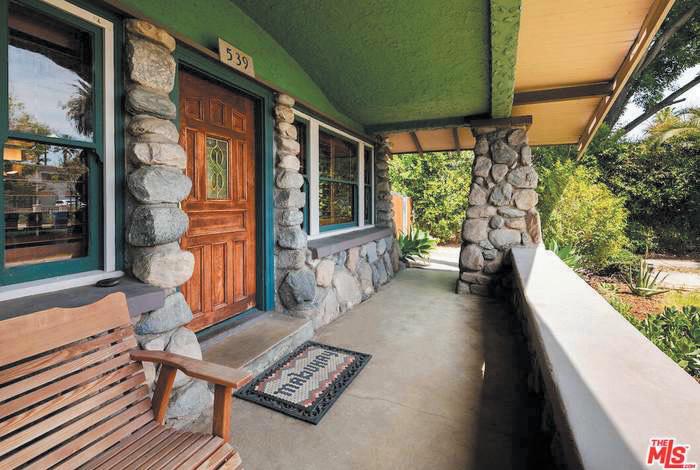


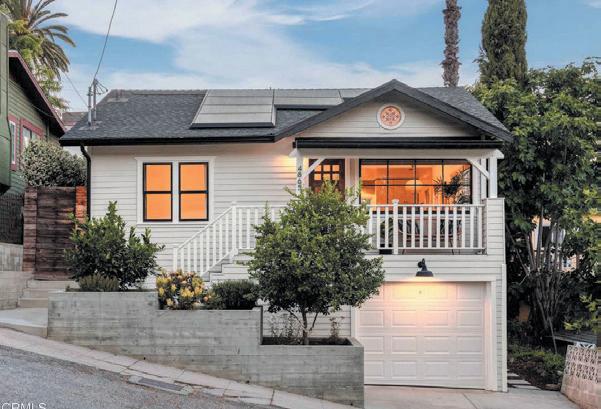
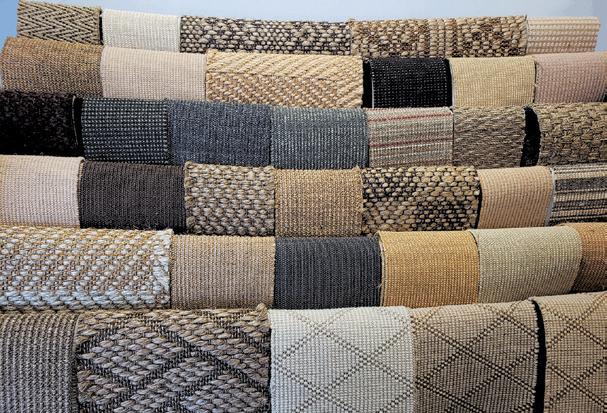

School is out. Some children are in camps, some working summer jobs and still others are in summer school. In lieu of the School Reports, we bring you a few personal journals of what entertainment our Larchmont young adults are finding.
By Julia Guillen
Every good music video needs to start with a scene. In this case, it’s my friend’s 17th birthday. We are not party people. Our idea of a “Sweet 17” included my four friends walking to get ice cream, failing to summon a ghost using a Ouija board and sitting in my friend’s yard listening to music not exactly the rough, partying teen lifestyle portrayed in the film “Project X.”
We were all debating what we wanted to do next when suddenly someone sat up in the grass and cried, “We should make a music video!”
Five minutes later, the four of us huddled over a laptop Googling lyrics to songs until we landed on the most hilarious one: “I’m Just Ken,” from the 2023 “Barbie” movie. After a rush of brainstorming in which we all shouted out ideas, I was somehow elected to play the role of Ken and lip-sync most
of the lyrics originally sung by Ryan Gosling. Are any of my friends actors? No. Was my costume just my hair shoved into a cap and a blanket around my shoulders? Yes. Were we all awful? Oh, absolutely. But it was also the most fun we’d had in weeks. We kept breaking character and
laughing as we danced along to Ryan Gosling’s voice.
At about 11 p.m., we pretended to fight each other while singing, “What’ll it take for her to see the man behind the tan and fight for me!”
We would not win a Grammy for our music video. But the feeling of barely being
able to breathe with how hard I was laughing was better than any trophy.
This is one of the last summers I’ll have with my friends, and for all of us it’s been a mess of jobs, internships, volunteering, vacations and beginning our college applications. We’ve barely had
time to see each other. This time next year, I’ll be preparing to leave them for four years—maybe even forever. So, that memory of trying to sing along to Ryan Gosling’s voice while my friends snickered from behind the camera is one I’m going to cherish for the rest of my life.
By Gianna Jordon
I love attending college in beautiful Boulder, Colorado, but for me, there is nothing quite like coming home to Larchmont Village every summer. Waking up in my childhood room and making plans with friends from the neighborhood brings me happiness, comfort and a warm nostalgia as we discuss everything we want to do in our summer between semesters. Stepping outside, the bright warm sun kisses my pale face while I take that all too familiar early morning walk to Larchmont. It’s quiet and peaceful with only a few neighbors out walking their dogs to greet me. I love that about this community.
While it’s early, and I feel exhausted after finals, and a
long cold semester, I am excited to meet my friends for sunrise surfing—our favorite summer L.A. tradition.
After we grab coffee and breakfast sandwiches at Clark Street, we then pile into one car and I smile from the beautiful feeling of being home. As we get to Venice, the boardwalk is still quiet, the waves are glassy and the sun is slowly coming through the patchy clouds.
We set up at our favorite spot, Venice Breakwater, right in the middle of the Venice Boardwalk at Ocean Front Walk. We get into the water, initially complaining about the shocking chill, I notice we are all smiling. We begin to cheer each other on to paddle out and catch waves. As we wait for the next wave, I

WINDSOR SQUARE students home for summer break enjoying their favorite activity (left, Skylar J. Rose and Gianna Jones).
understand that it’s not about surfing. It’s about water, energy, connection, the ease and flow of long-time friendships, our community and a familiar activity that further unites us.
After we dry off and head home, all tired and sandy, we reminisce about our favorite memories together and the fun times we had as children growing up around Larchmont.
Surfing is something I look forward to doing every summer because my friends and I continue to make new memories, add to our collection of silly inside jokes and transform our childhood friendships into meaningful adult ones. Coming home to L.A. and Larchmont Village during the summers is a reminder of how thankful I am for my hometown.
Jordan grew up on Arden Boulevard, attended Immaculate Heart School and is now a student at University of Colorado Boulder.



I enjoy seeing all the things
By Ty Smith
One thing I always enjoy over the summer is walking to Larchmont Boulevard and seeing how busy it is now that a lot of people have time off. It’s incredible to see so many people (and dogs!) walking on the streets shopping, eating and doing all the amazing things Larchmont has to offer.
One funny thing I would give a try is ordering at Starbucks. For example, I like using foods as my name like “Cheeseburger” and “Pizza.” But if you’re going for something funnier, try “Benson Boone” or “Harry Styles”—it always gives someone a laugh. And maybe if you don’t like the idea of saying your name
as “Cheeseburger,” you could actually get one if you’re out to dinner with your dad on the Boulevard! Or you could take things up a note with a voice lesson at the school upstairs from the real cheeseburgers like I do!
Aside from Larchmont, I love doing Sinjin Smith’s Beach Volleyball Camp and performing in Liza Mounjauze Productions. Right now we are currently doing the musical Oklahoma! One thing I did this summer was lay on my bed and think of ideas for this article! I am so excited for the rest of my summer.
Ty Smith is 10 years old and going into fifth grade at The Willows.
By Sadie Jacobs
Hello everyone! I’ve been to a few camps so far this summer, including a theater camp at the Willows Community School with my friend Eloise where we did a performance of “The Jungle Book,” and right now I’m doing a cheerleading camp at Campbell Hall. After that I’m going to Camp Teva at my school, Brawerman East, with a bunch of my friends. I got to be an only child for a week while my brother was away at sleep—away camp, Camp Alonim. We are taking a family vacation to Hawaii, which is where I was born, so it is special. I am going to go on a boat to see dolphins! And of course, fun days at home, going to Robert Burns Park every evening and playing some tennis at the club (LATC— dad’s note). I am having fun spending time with
(Continued from Page 5) tenants would be responsible for that. There also is no mention of what leasing the space would cost. The Chronicle reached out to the Newmark Pacific realtors as well as Simms and had not received a response from either by the time the paper went to press.



By Rhett Hutcheson
Playing video games has often been associated with laziness and mindlessly rotting away in front of a screen, and it all comes from the fact that when people game, they don’t actually exercise or move their body at all. Playing games like Call of Duty or GTA (Grand Theft Auto) can be very entertaining, can sometimes even build the mind to think strategically for a successful game.
Would there be a way to get that same satisfaction from blasting someone away in a game but also help improve our bodies physically? I think that the answer lies in Airsofting. This is a game where players use real looking guns with plastic BBs to shoot at each other while playing a variety of game modes. The game is similar to paintball, except there is no paint, which in return means that you can say goodbye to tracking paint into your car or house.
Physically participating in the game is a drastically different feeling from sitting on a couch at home with your heart beating out of your chest because you almost won your video game, rather than actually being in the game having to make decisions under an immense amount of pres-

sure. Sedentary energy boosts of adrenaline during a video game become actually useful when you are active physically, and can improve your own body’s stress response.
It is very interesting to learn more about yourself and how you react to a real world situation where someone is shooting at you. For example, imagine you are pinned down behind a car while being suppressed. Do you run? Do you stay in cover? Or do you figure out a way to go on the offense and get to the enemy? Everyone reacts in a different way, but from what I’ve seen, the people that are fast at figuring out how to switch to being the
one hunting instead of being hunted are the best players. Having strong communication with your friends in these scenarios is also essential, and Airsoft can help you think rationally under pressure instead of just being scared. While exercise, communication and fight or flight moments are all key components to Airsoft, it also is a great way to simply have some summer fun. While on the field, there are no thoughts running through your mind other than how to not get shot or how to do the shooting.
For indoor try Tac City Airsoft where you can rent gear, 2430 Artesia Ave., Fullerton. info@taccityairsoft.com.

‘Secret agent’ finds adventure this summer
By Otis Always McGuire
I went to Descanso Gardens with our friends Ace and Paula. We saw a rabbit and a bird feather. We saw an alive frog—mama screamed like this, “AHHHHHH!” We saw a rattle snake. I went to the Skirball—it was so fun. I got to be a secret agent and find all these animals that need help. I wish I could go there today, but I got plans. My plans today are to go to Uncle Drew’s. He is famous, you may recognize him as Drew Carey. He is silly, funny, cute—he loves me and we went to Seattle at the beginning of the summer. We went to the underground place of Seattle. It was a poop tour and
in one of the pictures the tour guide told us that there was a crapper exploding and that was hilarious. All that stuff was hilarious. Toilets were called crappers back then because the inventor’s last name was Crapper, which is hilarious.
I’ve been digging for bones and gold and diamonds in my backyard every single day and I dug a little swimming pool for some soldiers because they need some rest.
I went to my Auntie Shay Shay’s wedding. I was the bone breaker—I was the ring bearer. It was so fun, but sadly I didn’t get to break any bones. The summer has been going good. My conclusion is that summer fun should be fun.

It’s been suggested that, from time to time, perhaps, my reviews are a bit political for a theater column. My response is that theater is a political act, but I concede the point. Fair enough. But what’s a fellow to do when the big musical downtown (“Parade,” recently closed at the Ahmanson) is a Tony-winning Broadway revival about a southern mob lynching a
northern Jew for a crime he did not commit? (There’s more to it than that, but bear with me.)
What about “44 – The Obama Musical,” also recently at the Kirk Douglas, where (to quote the production press release) “Barack Obama’s election… ended racism forever,” and the show tells “the story of Obama you won’t read about in history books...

Theater Review by Louis Fantasia
because history books are now banned in most states”? What about Strife, in repertory at the Will Geer Theatricum Botanicum (with plays by Shakespeare and Chekov) through Sat., Oct. 4? Written in 1908 by John Galsworthy (best known for “The Forsyte Saga”), “Strife” tells the story of a wildcat strike at an Edwardian tin plate factory in Northern England. Co-directors Ellen and Willow Geer transfer the setting to the Pittsburgh steel mills of the Gilded Age and let rip an epic battle between capital and labor. This may be the best cast and tightest production I have seen at the Theatricum in a long time, and they are aided by Galsworthy’s refusal to turn his text into a polemic.


• Every Style: Sofas, Chairs, Slipcovers • Replace Weather-proof Lining
• Broad Selection of Fabrics
Draperies & Roman Shades
Galsworthy was considered the dramatic equal of George Bernard Shaw in his time, but unlike Shaw, who was committed to socialist ideals, Galsworthy tried to show the best in everyone. The factory owners believe they are paying the workers a fair wage. The workers really do need more. The union, caught in the middle, tries to get everyone to compromise, which people, when feel their way of life is being threatened, rarely do. It takes the death of impassioned strike leader Gerald C. Rivers’ wife (Earnestine Phillips) and the removal by the board of the company’s founder (the formidable Frank Ross) in a coup led by his liberal son to give the wavering union negotiator (Brian Wallace) the chance to finally effect a compromise between them.
Galsworthy’s bitter irony
is that after all the “strife,” personal and political, the compromise the parties agree to is exactly the document they rejected months earlier. The human cost, not the economic one, is at the play’s—and production’s—heart, and the large, committed cast brings the struggle to life with admirable clarity and conviction.
Galsworthy was awarded the Nobel Prize for Literature in 1932, but post-WWI British writers considered him (and other Edwardians) old-fashioned and out of touch. Perhaps they were right, but compared to the flood of “relevant” plays by new writers that we’ve had here in the past few years, Galsworthy speaks to the strife of the moment and should be seen by everyone, no matter which cable news channel you follow, the-



On a recent drive from Sherman Oaks to Beachwood Canyon, I decided to take the scenic route. The fabled Mulholland Drive, originally designated the Mulholland Highway when it opened in 1924, is one of the city’s many tributes to William Mulholland, the self-taught civil engineer known for building the Owens Valley Aqueduct. The aqueduct transported water 338 miles from the Eastern Sierra, supplying a reliable water source to the semi-arid Los Angeles basin. Mulholland’s feat of engineering, the ensuing water wars (which got the Hollywood treatment in the 1974 film “Chinatown”) and his transformative impact on the landscape of Southern California led urbanist and polemicist Mike Davis to call him “the city’s most Promethean figure.”
On a clear day, stop at one of the road’s many north-fac-
ing lookouts between the 405 and 101 freeways and you’ll enjoy the city’s best views of the San Fernando Valley. The sprawl is staggering, bound on the east side by the Verdugo Mountains and by the Simi Hills to the west. Visible due north, where the Newhall Pass intersects the San Gabriel and Santa Susana Mountains is the wet and wild, zig-zagging downhill channel known as the Cascades. This is the terminus of Mulholland’s magnum opus and where the aqueduct’s opening was celebrated on Nov. 5, 1913.
Cast your eyes just southeast of this California
Historical Landmark and you’ll look upon the neighborhood of Sylmar. The foothill settlement, which by the late 19th century had been planted with 1,100 acres of olive trees, rose to become the largest olive grove in the world by 1906. In 1893, the
area was dubbed “Sylmar,” a portmanteau of the Latin roots “silva,” translating to “forest,” and “mare,” or “sea,” evoking a “sea of trees.” A local story tells that Mulholland, standing at the site of his planned aqueduct, endorsed the epithet, remarking that the ripple of the wind through the olive trees’ green and silvery leaves reminded him of “waves crashing against the mountains.”
In Encino, in the southern part of the Valley just west of the 405, the reigning tree was the native Coast Live Oak. In 1769, when the Spanish Portolá expedition traveled through the area, it was the Tataviam and Tongva village of Siútcanga, meaning “the place of the oaks.” The town’s present-day moniker doesn’t fall far from the “tree,” arriving from the Spanish term for “oak”—”encino.” In similar fashion, you may still be able to scrounge for winter squash (in Spanish “calabazas”) in Calabasas and the fragrant mignonette plant (Scientific name Reseda odorata) in the central enclave known as Reseda.
Scan again toward the east side of the Valley and find Pacoima, which was the Fernandeño Tataviam village of Pacoigna until the Spanish arrived. “Pacoinga” translates to “the place of the entrance,”
presumed to refer to the entrance to Tujunga, nestled in the flats between the Verdugo and San Gabriel mountains. The Fernandeño Tataviam language also provides the historical antecedent for “Tujunga,” from the word “Tuhúnga,” meaning “place of the old woman.” Originating from the Tongva root “tuxu” (“old woman”), Tuhúnga is said to have been designated for a storied rock outcropping in Little Tujunga Canyon that was shaped like a seated female figure.
Many titles for Valley locales were eponymous, appointed by the 19th- and 20th-century ranchers and developers who saw gold in the undeveloped flats just over the hill from the L.A. Basin. The city of Burbank is so called for sheep rancher David Burbank; Van Nuys, after developer Isaac Newton Van Nuys; and its neighbor to the south, Sherman Oaks, for developer Gen. Moses Hazeltine Sherman.
Others were borne of fantasy. In 1919, Miraflores, a Valley property owned by Los Angeles Times publish-
(Continued from Page 10) atricum.org; 310-455-2322. • • •
If you do want an escape from the political, try the Pulitzer- and Tony-winning Heidi Chronicles by Wendy Wasserstein, at The Group Rep in NOHO, through Sun., Aug. 31. The play explores the struggle for independence, respect and recognition by women in a post-1960s world (Yes—it’s a comedy!). For tickets, call 818-763-5990. • • •
Or better yet, see the Tom Jones/Harvey Schmidt mu-

er Gen. Harrison Gray Otis, was purchased by novelist Edgar Rice Burroughs. Burroughs, known for his Tarzan series (beginning with the 1912 novel “Tarzan of the Apes”), rechristened the 540acre country estate “Tarzana Ranch,” after his famous title character. When Burroughs died in 1950, his ashes were buried beneath a walnut tree in the suburb—now simply called “Tarzana”—that still bears the heading of his high-flying hero.
The end of the road I drove the last mile of Mulholland, winding downhill, before landing on Cahuenga Boulevard, the historic mountain pass whose name was inherited from a Tongva phrase either meaning “place of the hill” or “place of the fox.” Turn right and I’d head south to Hollywood—my terra firma; the place I know and love. But something draws me north, toward the Valley—my fata morgana—a vast, blazing hot sprawl where heat waves rise above sitting old women, squashes and seas of trees, and where the King of the Jungle finds his unlikely home.
sical, The Fantasticks, the longest-running off-Broadway musical in theater history, at the Ruskin Theater in Santa Monica through Sun., Aug. 24, ruskingrouptheatre.com; 310-397-3244.
The original production opened on May 3, 1960, and closed Jan. 13, 2002, after 17,162 performances. Two days before opening night, U.S. spy plane pilot Francis Gary Powers had been shot down over Russia. The week before closing, Enron’s financial collapse was front page news. That’s history; those are facts.
But it’s the theater that gives us hope.


